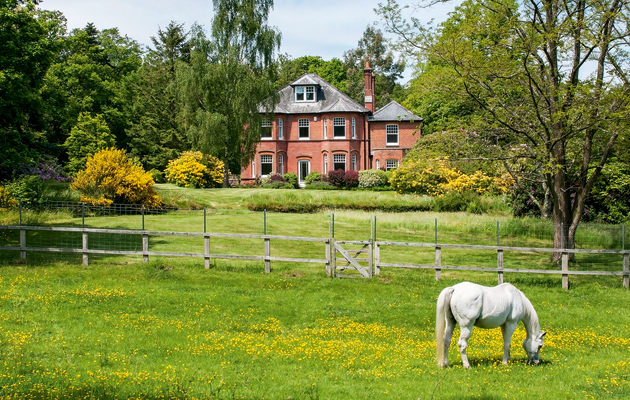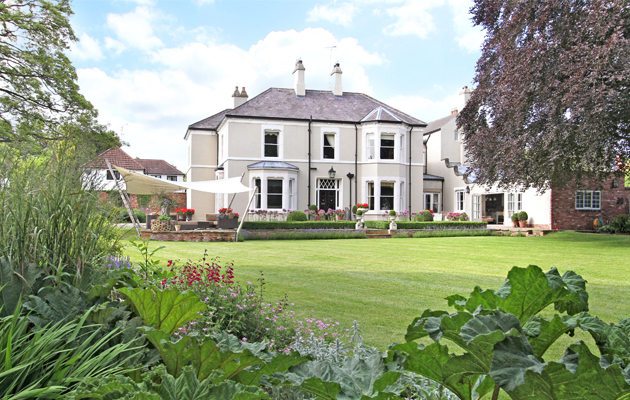Interest in equestrian estates remains consistent
Trotting on gently.


The equestrian-property market is keeping a surprisingly steady pace. In a year when the combined effect of the General Election and the hike in Stamp Duty Land Tax (SDLT) rates put a dampener on sales of country houses priced at more than £1 million, interest in horsey estates has been remarkably stable.
Equestrian sales tend to be seasonal and 2015 has been no exception. For example, says Mark Lawson of The Buying Solution, ‘the spring polo season, when the teams head for the UK, can be particularly busy for this market.’ If you look past these fluctuations, however, ‘demand for equestrian properties has fortunately remained fairly consistent over the course of the past few years,’ according to Kevin Allen of John D. Wood in Lymington.
Generally, equestrian buyers tend to fall into two main categories, according to Louise Elliott of Savills. They are either families moving out of London and looking for a good house plus a few stables and paddocks so the children can keep ponies and join the local Pony Club branch or they are professionals who want to upsize or buy a place of their own.
For example, Miss Elliott knows of one eventing and dressage rider who wishes to move her horses away from a shared yard and several racing professionals who are thinking of scaling up their operations. Both private and business buyers have budgets ranging from £2 million to £5 million.
In particular, Mr Allen believes that sizeable livery costs have persuaded a number of private riders to bring their horses back home, helping fuel appetite for a house with stables. In his New Forest patch, this has been boosted by a micro-trend among early retirees to keep a few horses on their land.
But another factor may also be indirectly aiding the market: many top-end equestrian estates qualify for mixed-use SDLT rates and are therefore unaffected by last December’s hefty rise, which has proved a brake in the residential property sector. ‘Anyone who is buying property is becoming much more astute about tax thresholds,’ believes Luke Morgan of Strutt & Parker. ‘People look into any possibility to save money.’
And in this case, the savings are considerable. It’s simple maths, explains Rupert Sweeting of Knight Frank, who has seen enquiries for properties with potential mixed use—including equestrian ones—increase in 2015: ‘Why pay 12% on a £2.5 million property when you can pay 4% if there is mixed use?’
Sign up for the Country Life Newsletter
Exquisite houses, the beauty of Nature, and how to get the most from your life, straight to your inbox.
That said, counters Sarah Broughton of buying agents Prime Purchase, ‘it’s highly unlikely that many people would buy an asset they don’t require just to save money. If all you need is a country house, for example, why would you purchase an equestrian business? If it was too commercial, it could be onerous to run and you may have to pay business rates.’
Instead, the more favourable treatment of mixed properties seems primarily to be a catalyst for buyers who either fall squarely into the professional camp or are considering turning their hobby into a sideline business by, for example, taking in liveries.
It’s certainly helped clinch some biggish sales this year, according to William Grant of specialist country and equestrian agent Fox Grant, who quotes the example of at least three large establishments—a riding school and livery yard in Somerset, a similar one in Dorset and a large farm with a livery business in Yorkshire—where the lower rates have made a difference.
However, mixed-use rates don’t apply to all equestrian estates, even when the facilities are of professional standard and the acreage is substantial, so it’s always best to turn to property specialists for help. ‘Be careful how you put forward your claim—don’t give them any excuse to turn you down,’ urges Mr Morgan. ‘Get the right property advice, which good lawyers should be able to provide.’
Often, continues Mr Morgan, any money saved on SDLT goes towards paying for additional land and better, or more extensive, facilities. ‘People tend to buy more land if the opportunity arises, knowing it’s a solid investment.’
If unused, the extra space can always be let—a choice that equestrian-property owners sometimes make anyway to help defray running costs, according to Mr Lawson. ‘They can benefit from mutual cooperation in terms of management, supply, staff and facilities. That could be a full tenant taking the vast majority of the equestrian facilities or it could be just a simple day-to-day individual livery.’
For buyers weighing this option, he has a final piece of advice: ‘Letting to a single entity, rather than lots of individuals, is much easier to manage and will keep the property neat and tidy.’

Credit: Strutt and Parker
Best country houses for sale this week
An irresistible West Country cottage and a magnificent Cumbrian country house make our pick of the finest country houses for

Houses perfect for alfresco dining in the autumn [PROMOTION]
These Fine & Country homes boast outdoor entertaining spaces that are perfect for enjoying the last of the British summer.
Carla must be the only Italian that finds the English weather more congenial than her native country’s sunshine. An antique herself, she became Country Life’s Arts & Antiques editor in 2023 having previously covered, as a freelance journalist, heritage, conservation, history and property stories, for which she won a couple of awards. Her musical taste has never evolved past Puccini and she spends most of her time immersed in any century before the 20th.
-
 Vertigo at Victoria Falls, a sunset surrounded by lions and swimming in the Nile: A journey from Cape Town to Cairo
Vertigo at Victoria Falls, a sunset surrounded by lions and swimming in the Nile: A journey from Cape Town to CairoWhy do we travel and who inspires us to do so? Chris Wallace went in search of answers on his own epic journey the length of Africa.
By Christopher Wallace Published
-
 A gorgeous Scottish cottage with contemporary interiors on the bonny banks of the River Tay
A gorgeous Scottish cottage with contemporary interiors on the bonny banks of the River TayCarnliath on the edge of Strathtay is a delightful family home set in sensational scenery.
By James Fisher Published
